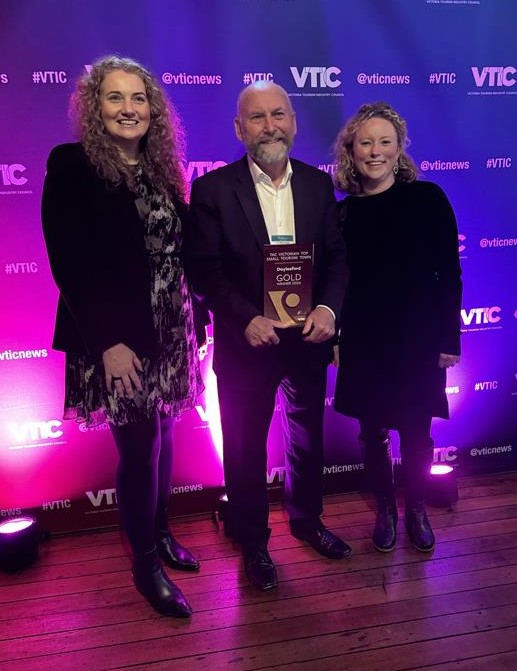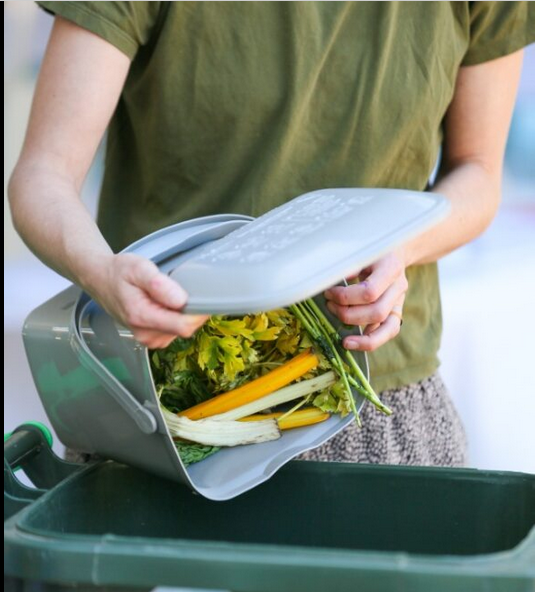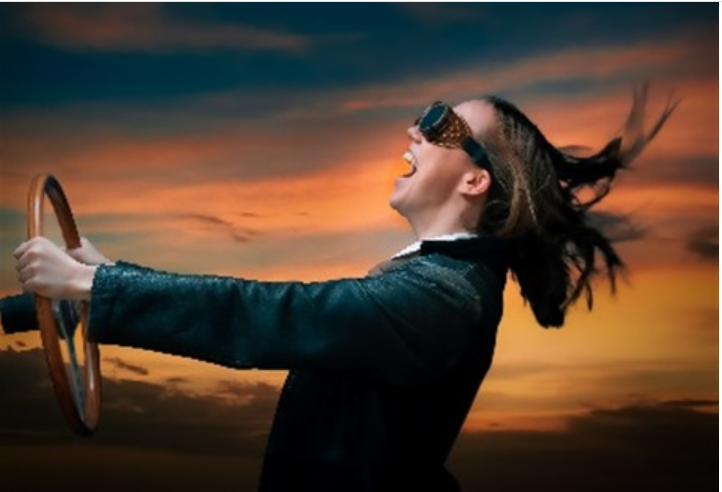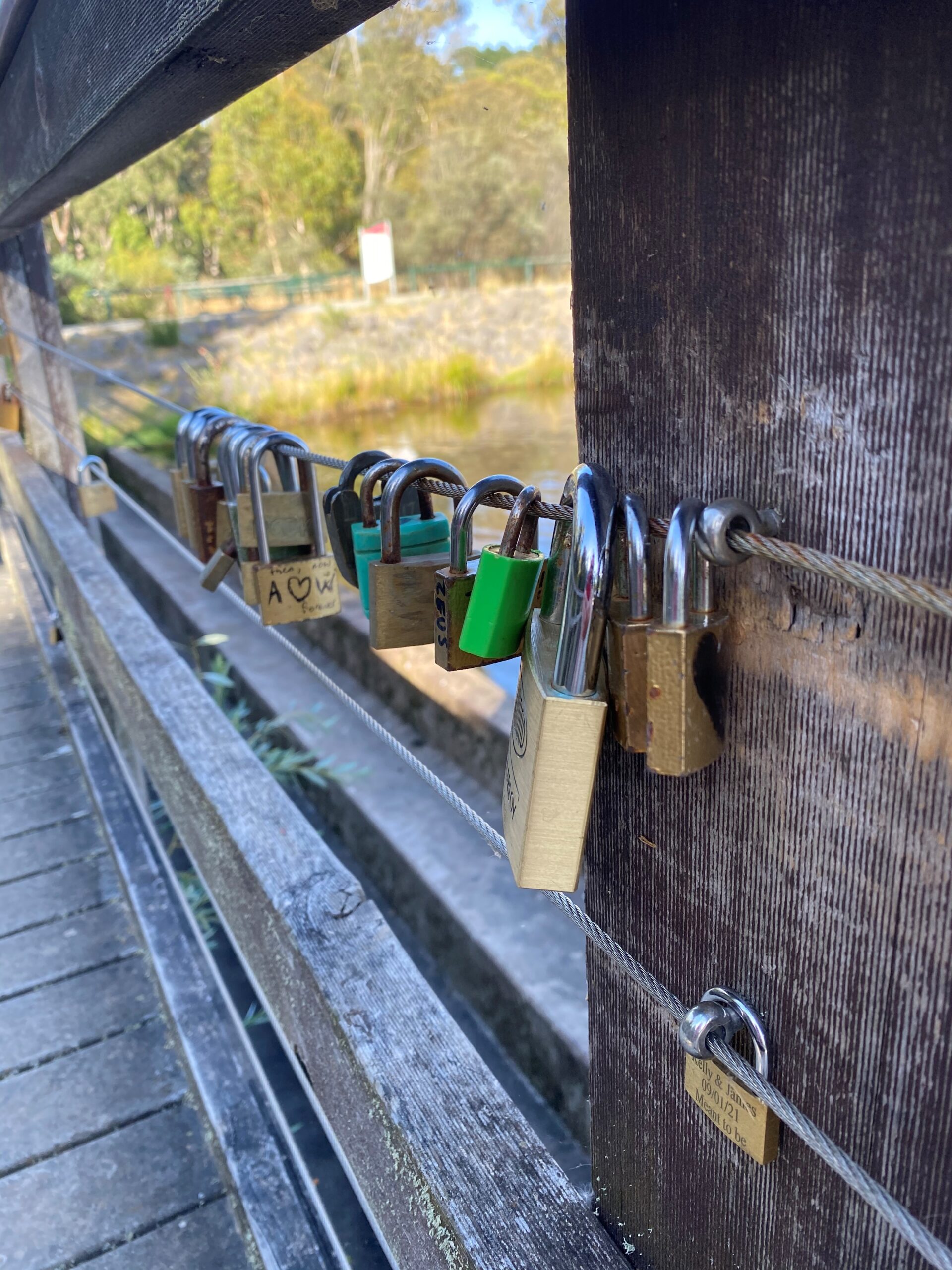July 8th, 2023Artists of the Central Highlands …
with Eve Lamb
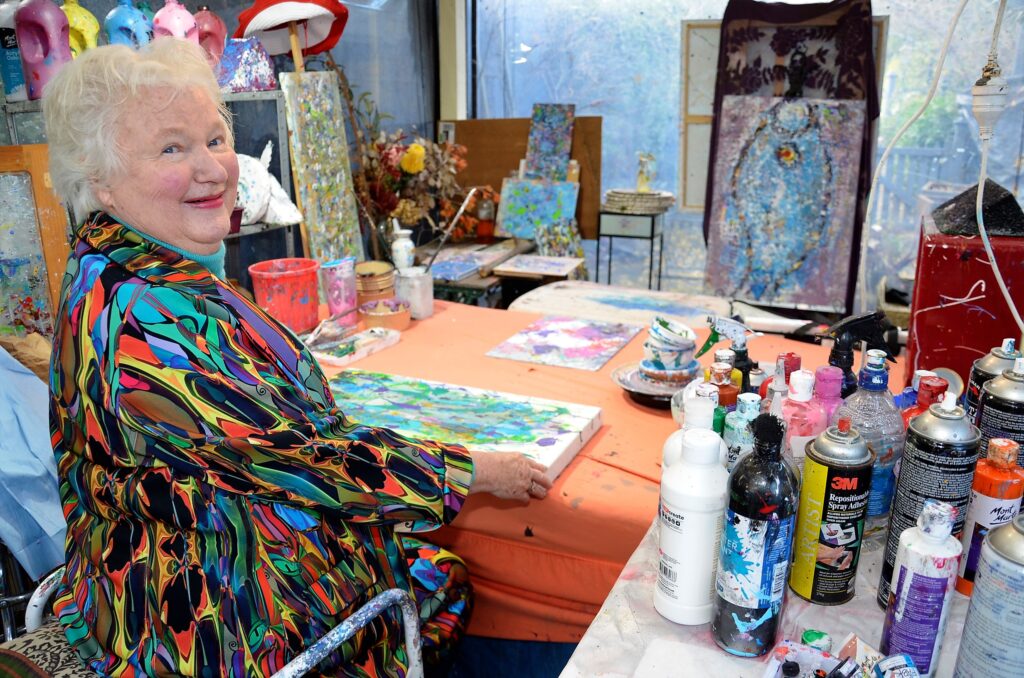
Formerly Sister Maleita, serving as a nun with a French Order in New Zealand, Daylesford’s Millie Gouldthorpe came to painting later in life than many, but once she did – Oh Boy! The canvas really exploded. Millie’s style which emerged in a torrent of creativity during the time of COVID lockdowns is vibrant, abstract expressionist, and the way she revels in the sheer joy of colour is all the more fabulous for the fact that she is classified as blind due to the development of a degenerative eye condition. When she makes art, sometimes literally in the dark, this local arts talent almost seems to be channelling some higher force.
Eve: How long have you lived in Daylesford now Millie?
Millie: Seventeen years. Came with my husband; he died in the front cottage. Then moved out to the back cottage with Jude who’d been a Loreto nun. And I also was a nun with Sisters of Our Lady of The Missions, a French Order, in New Zealand for twenty years in New Zealand. We entered the nun hood same day, same month, same year. Two different countries. Two different orders. We were both twenty years in the convent. She’s now my carer. I was Sister Maleita (that’s my real name). Born in Wales. Named after a cow. Entered the convent. They said ‘Can’t use that name’. I said ‘Oh. It’s a Holy Cow’.
Eve: Great story. When did you take up art?
Millie: I took up painting during the COVID period … and I suddenly had this burst of energy. I knew I had to paint. So I went out there (to the undercover space which has since become a studio) Pouring rain. Two o’clock in the morning, and got three canvasses at once. Got a yard broom, threw paint on the three canvasses, dragged the yard broom over the three at once. Could feel and see texture of blue and gold, and then I threw chalk paint and shoved a stick into the chalk paint… Later I was putting it outside and a friend, Miriam, came and said ‘Oh! You’ve drawn my homeland! The Wimmera!’. I said ‘Oh? Yes I have!’ (laughs) Anyway, she bought it! A triptych. But I was so driven with paint. And it sort of gave me a sense of independence. Of control and delight. Sheer delight with the colour. And because I wasn’t using a brush there’s no ego involved.
Eve: You obviously have a huge amount of fun. How do you paint? Do you just flick paint with the palette knife?
Millie: Yes. A stick, or anything.
Eve: Acrylic on canvas?
Millie: Yes. But I’ve gone through different stages. I went through a stage of mono-printing, just splashing and squeezing (marked surfaces together) and some amazing things happened with that!
Eve: People really love your work. It’s amazing that you only took up painting during COVID. What have been some of the highlights for you since then?
Millie: Well an artist, a real artist, and friend of mine, said ‘why don’t you enter the Castlemaine Art Exhibition?’ And so I put three in. I had an enormous one that went through so many metamorphisms. And the joy for me is that I’m not despairing. I know there’s something emerging and I can’t control it. I have to let it happen. It draws me. It paints me… So suddenly I’m seeing the browns and the blacks – and I began to just put handprints. Some white. Some brown. And I called it ‘Reconciliation’ . And it sold and I got such a shock! Then I donated a dancing dragonfly to the Zelman Memorial Symphony Orchestra here last year. U3A were sponsoring it. I said ‘would you like a raffle prize?’ So I did this big dancing dragonfly. At the end of the thing I got a tap on my shoulder and the conductor said ‘Are you Millie?” He said “I haven’t won the raffle but did you paint that?’
I said ‘Yes I did. Who are you?’ (I was upstairs and I couldn’t see). And he said ‘I was the conductor and I want to commission you’… I said ‘You don’t!’ He said ‘I have to’. So I’ve had three commissions from him.
Eve: So people are responding really strongly to your work and it’s an interesting irony, isn’t it Millie, that somehow with the loss of eyesight it’s really bringing to the fore an absolute passion and appreciation for vision and for colour.
Millie: Well. That’s exactly it.
Eve: So I have to ask you… What is the visual condition that you have?
Millie: It’s dry macular degeneration. The back of my eyes are covered over with whatever it is, so I can’t really see. I have to look up to catch you. So I’m relying on peripherals all the time.
Eve: How does the eyesight condition influence the way you go about creating work?
Millie: Well the other night the power went off. So I thought ‘Oh well I’m in the dark anyway most of the time’. So I reached across to where I knew there was a fresh canvas and I pulled it over and then I put my phone on, and got the light on the phone and just hovered over five colours with the light. Gold, verde, black, those sorts of colours. And I filled five little frisky tins with the paint. I got four, five sticks and I just sat there in the dark, and I just threw the paint blindly. In the morning Jude came in and said ‘Where did that come from!?” I said ‘Oh I was just playing around’.
She said ‘But the power went out. We had a brown out’. I said ‘I know, but I’m blind anyway’.
And then a neighbour came and saw it and said ‘Oh I have to have it Millie! I have to have it. I’ve got the place on my wall’… I really don’t know how to respond to you, other than that I have a passion, a feel, and I think that the fact that I can’t see gives me freedom from ego and thinking. And, well, I’m connected to The Source. My influence is God. My faith. And I know that I’m imbued with the source of creation. I didn’t come to art. Art came to me.
Eve: Can people visit you and your work here at your Daylesford studio by appointment?
Millie: Yes. Probably by appointment.







